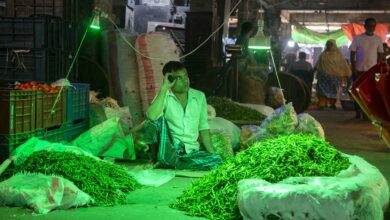Historic justice for the Galicians who built the Panama Canal

By Ana de Leon
Panama City, Jul 6 (EFE).- The first Galicians disembarked in Panama in 1906 at the Caribbean port of Colon to participate in the 20th century’s most impressive engineering feat: building the Panama Canal.
About 500 of them arrived from Cuba, where they had built the national railroad under the umbrella of a kind of “experiment,” the president of the Nosa Terra Foundation of Panama, Ricardo Gago, a descendent of some of the Galicians, told EFE.
Later, transformed into valued laborers by the United States, their numbers swelled to 8,489, although this figure is just an estimate and the actual total is unknown.
However, more than a century had to pass before these Galicians would receive the “historic justice” they deserve for the fundamental role they played, as one of the founders of Nosa Terra, Juan Carlos Barreiro, told EFE, adding that he got the idea after making a pilgrimage on the historic Camino de Santiago in northern Spain, which passes through Galicia.
“We want the recognition to be cemented and we’re going to get historic justice. The work of the Galicians on the Panama Canal cannot remain unnoticed,” Barreiro, who is also a descendent of some of those Galicians, said.
The Nosa Terra Foundation, founded during the current coronavirus pandemic and made up of seven members, pays tribute to the thousands of Galicians who arrived in Panama and built part of the country’s history.
The worth and effort of the Galician workers in building the Canal grew to the point where the chief engineer between 1905-1907, John Stevens, said “Each Galician is worth three” other workers,” Gago told EFE.
He added that US then-President Theodore Roosevelt expressed asked for Galician workers to build the interoceanic waterway, which stretches 82 kilometers (51 miles) across the isthmus.
The Galicians were picked up in their native land, in northwestern Spain, outside churches or at fairs and later they signed a contract with the “Isthmian Canal Convention,” the US commission that oversaw the work on the Canal.
They arrived in the Central American country from three main ports: Vigo and A Coruña on Spain’s Atlantic coast, and Barcelona on the Mediterranean. Therefore, it is estimated that although the majority of the workers were Galicians, the rest of the Spaniards who signed up to work on the Canal were from areas in and near Catalonia.
“They painted Panama in another way and surely many of them were deceived in coming here. They used pamphlets to promote coming to Panama,” Gago said.
Despite the fact that they were valued workers, they were “Silver” employees, the lowest labor category made up mainly of people from the Antilles and assigned to construction work. The Americans, meanwhile, were “Gold” workers, the highest category.
“They worked 10 hours a day in Panama’s climate, with the humidity and rain, in a jungle filled with animals that they didn’t have in Galicia.” Their work was done “with picks and shovels” and consisted of laying down railroad track and setting up telegraph poles, Gago said.
The Galician workers were hired en masse between 1906-1908, at which time Spain published a decree prohibiting employing any more Spaniards on the Panama Canal.
This impediment, however, only stopped Galicians from arriving in Panama, but the workers continued to disembark in Costa Rica and crossed the border to the construction zone.
After the inauguration of the Panama Canal in 1914 – accelerated by the First World War – a huge colony of Galicians remained in Panama.
Some of them migrated to Brazil to work, once again, as laborers on railroad projects, while others were employed by the US as foremen.
Those Galicians were the kernel of one of the biggest communities of Spaniards in Panama, which nowadays, via the Nosa Terra Foundation, will gain recognition at last.
According to Gago, in Agua Clara, where the Canal’s Caribbean locks are located, in 2023 a large monument to the Galicians in bronze and Galician stone will be unveiled.





